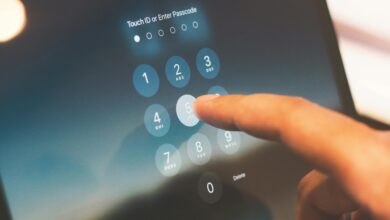The Best Cybersecurity Practices for Small Businesses

Small businesses are increasingly becoming targets for cybercriminals due to their often limited cybersecurity measures. While large corporations may have dedicated IT teams and robust security protocols, small businesses frequently lack the resources to implement comprehensive cybersecurity strategies. However, this doesn’t mean that small businesses are helpless against cyber threats. By adopting a proactive approach and implementing best practices, small businesses can significantly reduce their risk of cyberattacks. In this article, we’ll explore the most effective cybersecurity practices tailored for small businesses.
Why Cybersecurity Matters for Small Businesses
Cyberattacks can have devastating consequences for small businesses, including financial losses, reputational damage, and even business closure. According to a report by the U.S. National Cyber Security Alliance, 60% of small businesses close within six months of a cyberattack .
Small businesses often handle sensitive customer data, such as credit card information, personal identification details, and proprietary business information, making them attractive targets for hackers. Therefore, it’s crucial to prioritize cybersecurity to protect both your business and your customers.
1. Educate Employees on Cybersecurity Awareness
Human error is one of the leading causes of cybersecurity breaches. Employees who are unaware of potential threats can inadvertently expose your business to risks. Training your staff on cybersecurity best practices is one of the most cost-effective ways to enhance your security posture.
Key Steps:
- Regular Training Sessions : Conduct regular cybersecurity awareness training to keep employees informed about phishing scams, malware, and social engineering attacks.
- Simulated Phishing Attacks : Use tools to simulate phishing emails and test employee responses. This helps identify weak points and reinforces learning.
- Password Hygiene : Teach employees to create strong, unique passwords and use multi-factor authentication (MFA) whenever possible.
- Data Handling Protocols : Ensure employees understand how to handle sensitive data securely, including proper encryption and secure file-sharing practices.
2. Implement Strong Access Controls
Limiting access to sensitive systems and data is essential for reducing the risk of unauthorized access. Not every employee needs access to all parts of your network or sensitive information.
Best Practices:
- Role-Based Access Control (RBAC) : Assign permissions based on job roles. For example, only finance personnel should have access to financial records.
- Least Privilege Principle : Grant employees the minimum level of access necessary to perform their jobs.
- Regular Audits : Periodically review user accounts and permissions to ensure they are up-to-date and appropriate.
3. Use Multi-Factor Authentication (MFA)
Multi-factor authentication adds an extra layer of security by requiring users to provide two or more verification factors to access accounts or systems. Even if a hacker obtains a user’s password, MFA makes it much harder for them to gain unauthorized access.
How to Implement MFA:
- Enable MFA on all critical accounts, including email, cloud storage, and financial systems.
- Use hardware tokens, mobile apps (like Google Authenticator), or SMS-based codes for additional verification steps.
- Encourage employees to enable MFA on their personal accounts as well, especially if they use personal devices for work.
4. Keep Software and Systems Updated
Outdated software and operating systems are common entry points for cybercriminals. Hackers exploit known vulnerabilities in unpatched systems to launch attacks.
Best Practices:
- Automatic Updates : Enable automatic updates for all software, including antivirus programs, firewalls, and operating systems.
- Patch Management : Regularly check for and apply security patches for all applications and devices.
- End-of-Life Software : Avoid using outdated software that no longer receives security updates. Upgrade to newer versions or replace with supported alternatives.
5. Secure Your Network
A secure network is the foundation of any cybersecurity strategy. Without proper network security, hackers can easily infiltrate your systems and steal sensitive data.
Key Measures:
- Firewall Protection : Install a robust firewall to monitor and control incoming and outgoing network traffic.
- Wi-Fi Security : Use strong encryption (WPA3) for your Wi-Fi network and change default router passwords. Consider setting up a separate guest network for visitors.
- Virtual Private Network (VPN) : Require remote employees to use a VPN to securely connect to your business network.
- Network Segmentation : Divide your network into smaller segments to limit the spread of malware or unauthorized access.
6. Backup Data Regularly
Ransomware attacks, where hackers encrypt your data and demand payment for its release, are becoming increasingly common. Regular data backups ensure that you can restore your systems without paying the ransom.
Backup Best Practices:
- Automated Backups : Set up automated backups to occur daily or weekly, depending on your business needs.
- Offsite and Cloud Storage : Store backups in multiple locations, including offsite servers and cloud storage, to protect against physical disasters like fires or floods.
- Test Restores : Periodically test your backup restoration process to ensure that your data can be recovered quickly in case of an attack.
7. Protect Against Malware and Ransomware
Malware and ransomware are among the most prevalent cyber threats facing small businesses. These malicious programs can disrupt operations, steal data, and cause financial harm.
Preventive Measures:
- Antivirus Software : Install reputable antivirus software on all devices and keep it updated.
- Email Filtering : Use email filtering tools to block malicious attachments and links.
- Endpoint Protection : Deploy endpoint protection solutions to monitor and secure all devices connected to your network.
- User Education : Train employees to recognize suspicious emails, links, and downloads.
8. Develop an Incident Response Plan
Even with the best preventive measures, breaches can still occur. Having a well-defined incident response plan ensures that your business can respond quickly and effectively to minimize damage.
Components of an Incident Response Plan:
- Detection and Analysis : Identify the nature and scope of the breach.
- Containment : Isolate affected systems to prevent further damage.
- Eradication : Remove the threat from your systems.
- Recovery : Restore systems and data from backups.
- Post-Incident Review : Analyze the incident to identify lessons learned and improve future responses.
9. Encrypt Sensitive Data
Encryption converts data into a code that can only be accessed with a decryption key, making it unreadable to unauthorized users. Encrypting sensitive data both at rest and in transit adds an extra layer of protection.
How to Implement Encryption:
- Full Disk Encryption : Encrypt entire hard drives to protect stored data.
- Email Encryption : Use encrypted email services when sending sensitive information.
- File Encryption : Encrypt individual files before sharing them via cloud storage or email.
10. Work with Trusted Vendors and Partners
Third-party vendors and partners can introduce vulnerabilities into your business if they don’t follow proper cybersecurity protocols. It’s important to vet vendors and ensure they meet your security standards.
Vendor Security Checklist:
- Security Audits : Request proof of regular security audits and compliance certifications (e.g., SOC 2, ISO 27001).
- Access Control : Limit vendor access to only the systems and data they need to perform their tasks.
- Contractual Agreements : Include cybersecurity requirements in contracts with vendors.
11. Comply with Industry Regulations
Depending on your industry, you may be subject to specific cybersecurity regulations, such as:
- General Data Protection Regulation (GDPR) : For businesses handling EU citizens’ data.
- Health Insurance Portability and Accountability Act (HIPAA) : For healthcare-related businesses.
- Payment Card Industry Data Security Standard (PCI DSS) : For businesses processing credit card payments.
Ensure compliance with these regulations to avoid legal penalties and build trust with customers.
12. Monitor and Respond to Threats in Real-Time
Proactive monitoring allows you to detect and respond to threats before they escalate into full-blown attacks.
Tools for Monitoring:
- Intrusion Detection Systems (IDS) : Monitor network traffic for suspicious activity.
- Security Information and Event Management (SIEM) : Aggregate and analyze security logs in real-time.
- Threat Intelligence Feeds : Stay informed about emerging threats and vulnerabilities.




